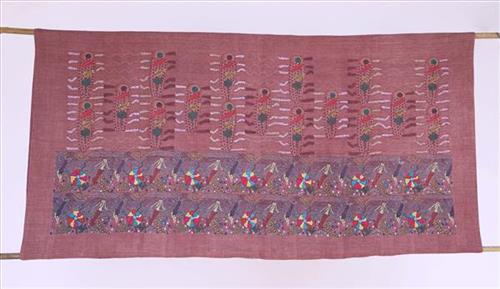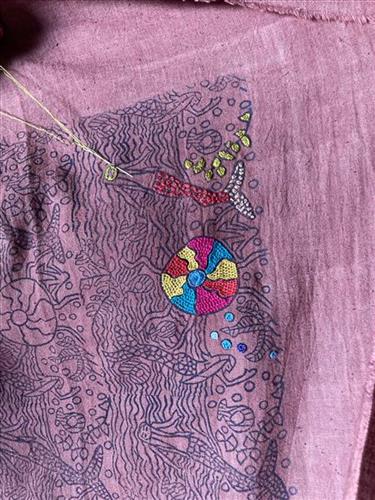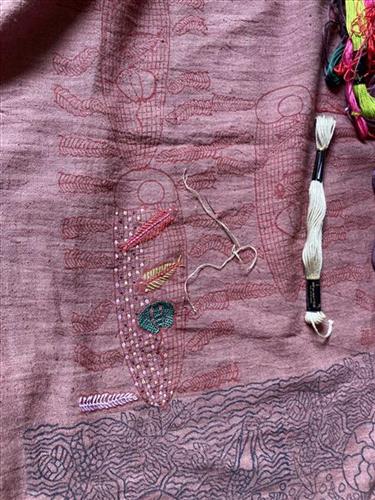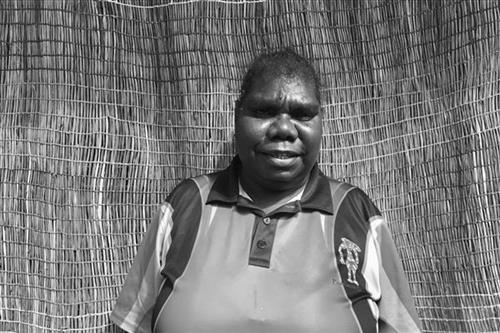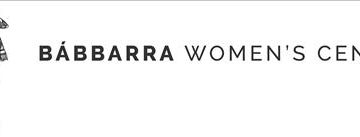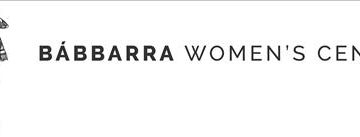377810582372304
AN-GUJECHIYA (FISH TRAP) AND JIN-MERDAWA (MERMAID)
Elizabeth Gochan Wullunmingu b. 1972, Darwin, Australia
AN-GUJECHIYA (FISH TRAP)
JIN-MERDAWA (MERMAID)
Woodblock print and Lambadi embroidery on handwoven kala cotton
Pigment print with organic dyes
Design brief by Bábbarra Women’s Centre
Print composition by Anshu Arora and Prithi Pais
Printed by artisans at Tharangini Studio
Embroidery by M.Vasanthi & Sangeetha at Porgai Artisans Association
Woodblock carving by Shri C.H.Sreeram and Shri S.K. Rajak Fabric by Green Tailor Elizabeth Wullunmingu is an An-barra Burarra woman who grew up speaking Burarra language on her mother country at the entrance of the Blyth River in Arnhem Land, Australia. Her adopted mother, P. Galijan Dungudja, was a sewer in the Bábbarra Women’s Centre sewing room and a strong advocate for women in the community. Wullunmingu’s style is intricate, with delicate (shells) and dakarra (cockles) representative of the balaji (bush food) found on the beaches and saltwater estuaries east of Maningrida. The detailed hand embroidery is glorious, respectfully aligned to Wullunmingu’s own passion for sewing. Wullunmingu exclaims: I love to make Lino print fabric showing Jin-Merdawa (mermaid) . I like using bright colours. Jin-Merdawa live at Gupanga. Gupanga is located at the mouth of the Blyth River, Arnhem Land. It is a saltwater place. There must be more than one Jin-Merdawa living there? They eat fish, shellfish and seaweed. Sometimes they travel to the end of the river to find food in the ocean, but they don’t go far and always swim back to their home.
